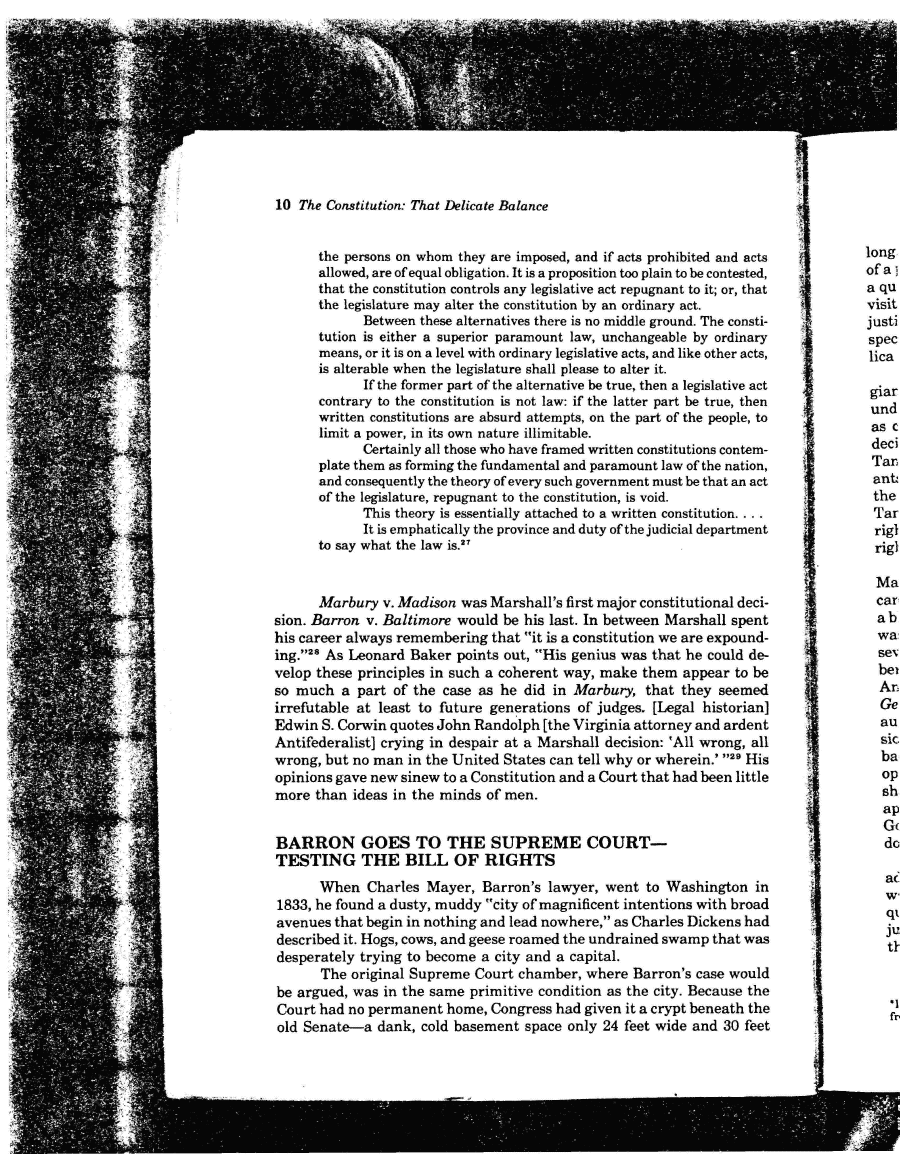|
10 The Constitution: That Delicate Balance
the persons on whom they are imposed, and if acts prohibited and acts
allowed, are of equal obligation. It is a proposition too plain to be contested,
that the constitution controls any legislative act repugnant to it; or, that
the legislature may alter the constitution by an ordinary act.
Between these alternatives there is no middle ground. The consti-
tution is either a superior paramount law, unchangeable by ordinary
means, or it is on a level with ordinary legislative acts, and like other acts,
is alterable when the legislature shall please to alter it.
If the former part of the alternative be true, then a legislative act
contrary to the constitution is not law: if the latter part be true, then
written constitutions are absurd attempts, on the part of the people, to
limit a power, in its own nature illimitable.
Certainly all those who have framed written constitutions contem-
plate them as forming the fundamental and paramount law of the nation,
and consequently the theory of every such government must be that an act
of the legislature, repugnant to the constitution, is void.
This theory is essentially attached to a written constitution. . . .
It is emphatically the province and duty of the judicial department
to say what the law is.27
Marbury v. Madison was Marshall's first major constitutional deci-
sion. Barron v. Baltimore would be his last. In between Marshall spent
his career always remembering that "it is a constitution we are expound-
ing."28 As Leonard Baker points out, "His genius was that he could de-
velop these principles in such a coherent way, make them appear to be
so much a part of the case as he did in Marbury, that they seemed
irrefutable at least to future generations of judges. [Legal historian]
Edwin S. Corwin quotes John Randolph [the Virginia attorney and ardent
Antifederalist] crying in despair at a Marshall decision: 'All wrong, all
wrong, but no man in the United States can tell why or wherein.' "29 His
opinions gave new sinew to a Constitution and a Court that had been little
more than ideas in the minds of men.
BARRON GOES TO THE SUPREME COURT-
TESTING THE BILL OF RIGHTS
When Charles Mayer, Barren's lawyer, went to Washington in
1833, he found a dusty, muddy "city of magnificent intentions with broad
avenues that begin in nothing and lead nowhere," as Charles Dickens had
described it. Hogs, cows, and geese roamed the undrained swamp that was
desperately trying to become a city and a capital.
The original Supreme Court chamber, where Barren's case would
be argued, was in the same primitive condition as the city. Because the
Court had no permanent home, Congress had given it a crypt beneath the
old Senate—a dank, cold basement space only 24 feet wide and 30 feet
|

